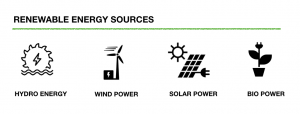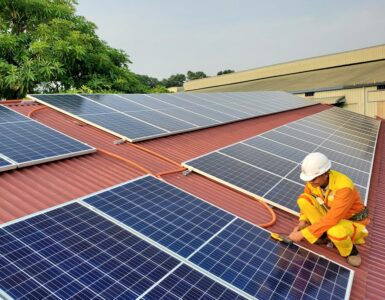India is a land of about 1.3 billion people and one of the fastest-growing economies in the world. The rapid development needs resources and loads of it.
One of the important ingredients to make those strides forward is the need for power, quite literally.
Manufacturing, agriculture, commercial business, transport or homes everything needs power and electricity.
The country’s installed power generating capacity in 2019 was approximately 350.162 GW (GW, or 1,000 megawatts) and it is one of the largest in the world.
The majority of this is contributed by the traditional thermal sources, primarily coal. As we all know, coal-burning power plants release carbon dioxide, particulate matter, sulfur dioxide, nitrogen oxide, and other harmful gases into the atmosphere. This not only impacts the environment in the long run but also plays havoc on the health of thousands of people.
Moving away from coal to renewable natural resources to produce power would be a step in the right direction.
Renewable Power

Nature’s gifts to mankind – Sunlight, Wind, Biogas, and Water – can be great sources of power and electricity. Renewable energy is derived from natural resources which are replenished constantly. The medium is not only economically more viable but extremely environment friendly.
India – Where it stands
India’s renewable power plants constituted 39% of the total installed capacity as of 30th June 2021. Installed renewable power generation capacity has increased at a fast pace over the past few years, posting a CAGR of 19.78% between FY14–18. More than US$42 billion has been invested in India’s renewable energy sector since 2014. As a part of its Paris Agreement commitments, the Government of India has set an ambitious target of achieving 175 GW of renewable energy capacity by 2022. This includes –
- 100 GW of Solar power
- 60 GW from Windpower
- 10 GW from Biomass power
As of June 2018, the Government of India is aiming to achieve 175 GW of renewable energy capacity by 2022.
The renewable energy space in India has become very attractive from investors’ perspectives. 100 percent foreign direct investments (FDI) are allowed under automatic route for projects of renewable power generation and distribution subject to provisions of The Electricity Act, 2003. India is ranked second in the Renewable Energy Attractiveness Index 2017 as there is ample push from the government and the economics of the market are improving. The country’s renewable energy sector has attracted FDI worth $7.48 billion between April 2000 and December 2018.
A report by the India Brand Equity Foundation (IBEF), an arm of the Indian government’s ministry of commerce, makes some pertinent points on the progress India has made on the 4 sources of clean energy –
Solar Power
- India has the third-largest installed capacity of concentrated solar power (CSP).
- Solar installation in India is expected to increase 360 percent by 2020.
Wind Power
- India has the fourth-largest installed capacity of wind power.
- Wind power accounted for the highest percentage of India’s renewable energy space.
BioPower
- About 4.96 million household-size biogas plants have been installed in India since the inception of the National Biogas and Manure Management Programme (NBMMP) in 2014.
- 15,000 biogas plants were installed in FY18 (up to December 2017)
Hydro
- India has a hydropower potential of around 145 GW
- Installed capacity from large hydel projects in India increased from 35.9 GW in March 2008 to 45.3 GW in March 2018
Future
As per the Ministry of New and Renewable Energy’s (MNRE) study, India is estimated to have a renewable energy potential of 900GW from commercially exploitable sources
- Solar energy- 750 GW
- Wind power – 102 GW
- Bio-energy – 25 GW
- Small Hydro – 20 GW
With rapid urbanization, industrialization, smart cities, and electrical transport – India’s power demand has been rising at a fast pace. It is estimated that India will require an additional power supply capacity of 450 GW by 2034. Dependency on traditional sources of power will not be sufficient if the country aspires to become a $10 trillion dollar economy by 2032.
Replacing coal with renewable sources will not only help in cost reductions but will greatly help in climate control and managing global warming.





Add comment